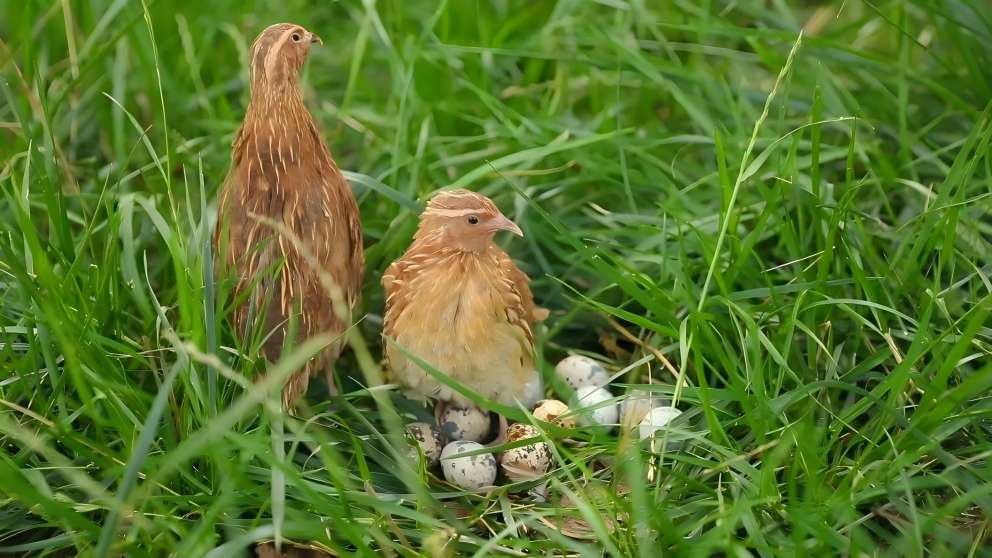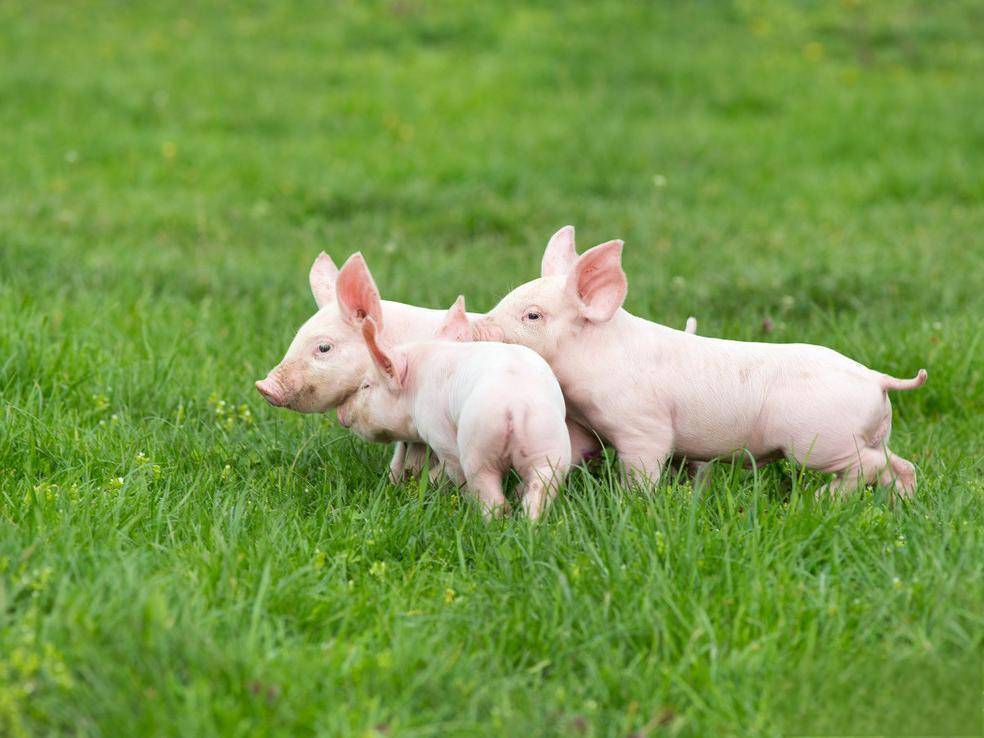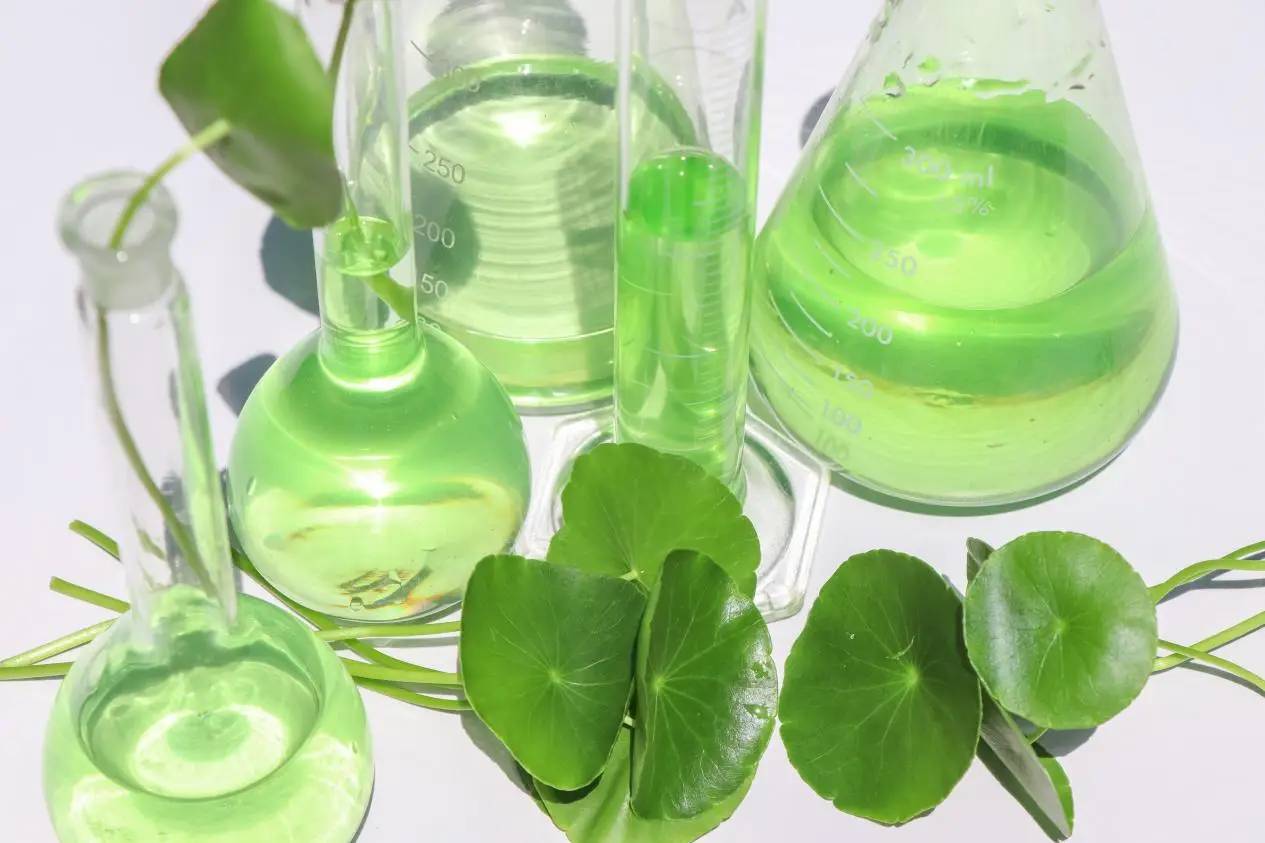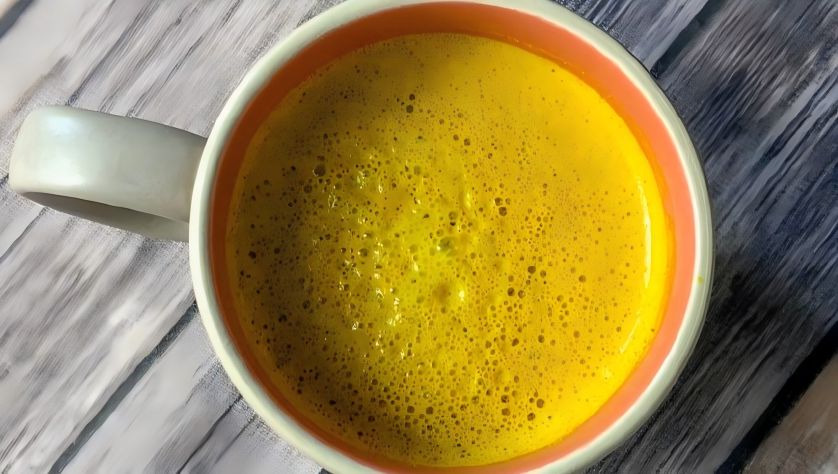What Is the Benefit of Turmeric Powder Hindi?
In intensive pig farming, the use of antibiotics for prevention and treatment is common. The indiscriminate use of antibiotics can cause problems such as bacterial resistance, which seriously affects human health. Curcumin is a natural phenolic pigment extracted from the turmeric plant Curcuma longa. It is insoluble in water, soluble in organic solvents, and sensitive to pH [1]. Numerous studies have shown that curcumin has multiple biological functions, such as antioxidant, anti-inflammatory, anti-pathogenic microbial and immune regulation [2]. Adding an appropriate amount of curcumin to the feed can improve animal production performance [3]. Therefore, curcumin can be developed as an alternative antimicrobial additive for use in animal production. This article reviews the physiological functions of curcumin and its application in pig production, providing a reference for further research and development and utilization of curcumin in pig production.
1 Physiological functions of curcumin
1.1 Antioxidant function
As a lipophilic polyphenol, curcumin contains 2 o-methoxyphenyl and ketene groups and a ketene alcohol group in its structure. Curcumin scavenges reactive oxygen species (ROS) by forming a stable quinone compound through binding to intracellular free radicals, thereby inhibiting lipid peroxidation damage [4]. Yu et al. [5] found that heat stress can induce an increase in ROS in skeletal muscle cells, while curcumin can significantly reduce the heat stress-induced ROS concentration in cells. The Nrf2 signaling pathway plays an important role in oxidative stress. Under normal conditions, Nrf2 and Keap1 form a dimer. When oxidative stress occurs, Keap1 is modified and its conformation changes, prompting Nrf2 to dissociate and enter the nucleus to bind to ARE, activate the transcription of phase II metabolic enzymes, antioxidant enzymes or drug transporters, and thus exert an antioxidant function [6]. Studies have found that curcumin can increase the expression of intestinal genes such as SOD1, HO-1, CAT and Nrf2, increase the activity of intestinal GSH-PX and T-AOC, and increase the removal of ROS [7-8]. This shows that curcumin can protect the intestines from damage by activating the Nrf2 signaling pathway to increase the antioxidant capacity of tissues.
1.2 Anti-inflammatory function
The NF-κB signaling pathway plays an important role in regulating inflammatory responses, which can promote inflammatory responses by regulating pro-inflammatory cytokines (IL-1β, IL-6, TNF-α), cyclooxygenase-2 (COX-2), and prostaglandin E2 (PGE2). Curcumin can inhibit the inflammatory response by inhibiting the NF-κB signaling pathway and COX-2 to reduce the production of IL-1β, IL-6 and TNF-α[9-11]. Inflammasomes can promote pyroptosis by regulating NF-κB signaling to activate Caspase-1, and can also induce the secretion of IL-1β and IL-18[12]. Under inflammatory conditions, NLR family pyrin domain-containing protein 3 (NLRP3) is activated in various inflammasomes. Curcumin can inhibit the activation of NLRP3 inflammasomes and the secretion of IL-1β by regulating the NF-κB signaling pathway. It can also suppress the inflammatory response by disrupting the spatial formation of NLRP3 inflammasomes [13].
1.3 Anti-pathogenic microbial function
Curcumin and its derivatives have antibacterial effects on both gram-positive and gram-negative bacteria. Tyagi et al. [14] found that curcumin can cause leakage in the cell membranes of gram-positive bacteria (Staphylococcus aureus, Enterococcus faecalis) and gram-negative bacteria (Escherichia coli and Pseudomonas aeruginosa), leading to bacterial death. Zhang Xin's [15] research also found that curcumin can inhibit bacteria by destroying the cell walls of Staphylococcus aureus and Escherichia coli, increasing the permeability of the cell membrane, and affecting the cell's bioelectricity. The above results show that curcumin can inhibit bacteria by destroying their structural integrity. Li Haiying et al. [16] used succinic acid as a linker arm, and grafted curcumin onto the L-arginine molecule through an esterification and amidation reaction to obtain L-arginine-based curcumin. It was found that the solubility of this substance in water was enhanced, and it had a better inhibitory effect on Staphylococcus aureus, Salmonella, Escherichia coli and Pseudomonas aeruginosa than curcumin. This shows that the antibacterial effect can be improved by treating and modifying curcumin.
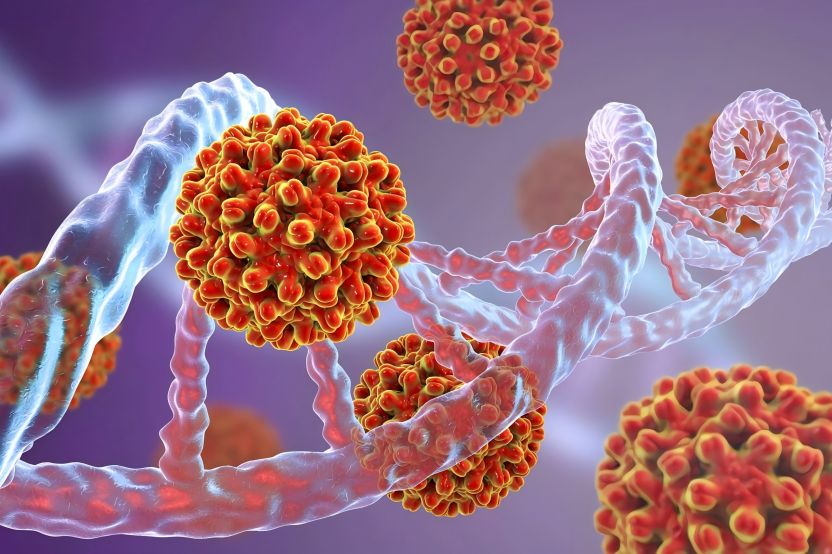
In terms of fungi, Hua Chenyan [17] found that within a certain range, curcumin has a significant inhibitory effect on the germination of gray mold spores, the elongation of bud tubes, and mycelial growth, and that the inhibitory effect becomes more pronounced with increasing concentration. Prajapati et al. [18] found that curcumin can inhibit the synthesis of ergosterol in Rhizopus oryzae by inhibiting cytochrome P450 superfamily enzyme 51B (CYP51B), thereby exerting antifungal activity. The above results show that curcumin has an inhibitory effect on fungi. In addition, curcumin also inhibits the action of oocysts of Eimeria tenella in chickens [19].
1.4 Antiviral function
Curcumin can bind to viral capsid proteins, virus-specific enzymes, or RNA polymerases, etc., to block viral replication and infection, thereby effectively alleviating viral infections and symptoms [20]. Studies have found that curcumin can inhibit the activity of genes related to viral virulence and replication to block HIV-1 replication [21]; inhibit hepatitis B virus infection by downregulating the acetylation of histones bound to closed circular DNA, and exert preventive and therapeutic effects on hepatitis B virus by regulating signal pathways such as Wnt/β-catenin, MAPK and NF-κB[22-23].
1.5 Immune regulation function
Han Meiyu [24] found that the addition of curcumin to the feed can significantly alleviate the histopathological damage caused by aflatoxin B1 to the thymus, spleen and bursa of Fabricius in broilers, increase the organ index and the number of plasma cells in the immune organs and the ratio of their nuclear to cytoplasmic areas, and alleviate the immunosuppressive effect caused by aflatoxin B1 by increasing the expression levels of IL-2 and IFN-γ. Liu Mengjie [25] found that curcumin can increase serum IgA, IgM, IgG and C3, C4 levels, reduce IL-6 levels, and increase spleen IL-4 and INF-γ gene expression. In addition, curcumin can reduce the proportion of neutrophils, macrophages and killer T lymphocytes in immune organs to reduce reactive inflammation after spinal cord injury in mice [26]. In summary, curcumin can improve the immune function of the body by regulating cellular and humoral immunity.
2 Curcumin in pig production
Intrauterine growth restriction can cause inflammatory damage in piglets, a decrease in the liver's antioxidant capacity, and disturbances in glycolipid metabolism. Adding curcumin to the diet of weaned piglets with intrauterine growth restriction can improve production performance; it may alleviate liver damage by regulating the IκBα/NF-κB and JAK/STAT pathways, improve antioxidant capacity by regulating the Nrf2/Hmox1 pathway key protein and gene mRNA expression, regulate the liver's glucose and lipid metabolism by regulating the insulin signaling pathway and SREBP and its target genes; it can increase the activity of intestinal disaccharidase, the content of IGF-I in the ileal mucosa and the expression of IGF-I mRNA, increase the length of intestinal villi and microvilli, improve intestinal digestion and absorption function, and promote growth and development; it can reduce the level and expression of pro-inflammatory factors such as IL-1β, and increase the content of immunoglobulins such as IgA, can alleviate the adverse effects of weaned piglets' immune function [27-28]. Deng Hui et al. [29] also found that adding synthetic curcumin or naturally extracted curcumin to the diet can improve the immune function of Sichuan-Tibetan black piglets, without affecting the growth performance and antioxidant function of piglets.
Under Escherichia coli attack, dietary curcumin supplementation can significantly reduce the feed conversion ratio of weaned piglets, significantly increase the activities of GSH-PX, CAT, and SOD in the serum and T-AOC, and significantly reduce the MDA content; significantly increase the height of the villi and crypts of the jejunum and ileum, significantly reduced villus width and crypt depth; significantly reduced plasma DAO activity and D-lactic acid content; significantly increased gene and protein expression of tight junction proteins in the intestine (Claudin-1, Occludin and ZO-1); significantly increased the number of goblet cells in the jejunum and ileum and the expression of sIgA protein and IL-10 mRNA, significantly reduced the expression of TLR4 and Calprotectin proteins and IL-1β, 1L-6, TNF-α and TLR4 mRNA. The results showed that curcumin can promote piglet growth, improve their antioxidant capacity, improve the morphological structure of the intestinal mucosa, reduce intestinal mucosal permeability, improve intestinal mucosal tight junctions and immune function, thereby playing a protective role in the intestinal barrier [30].
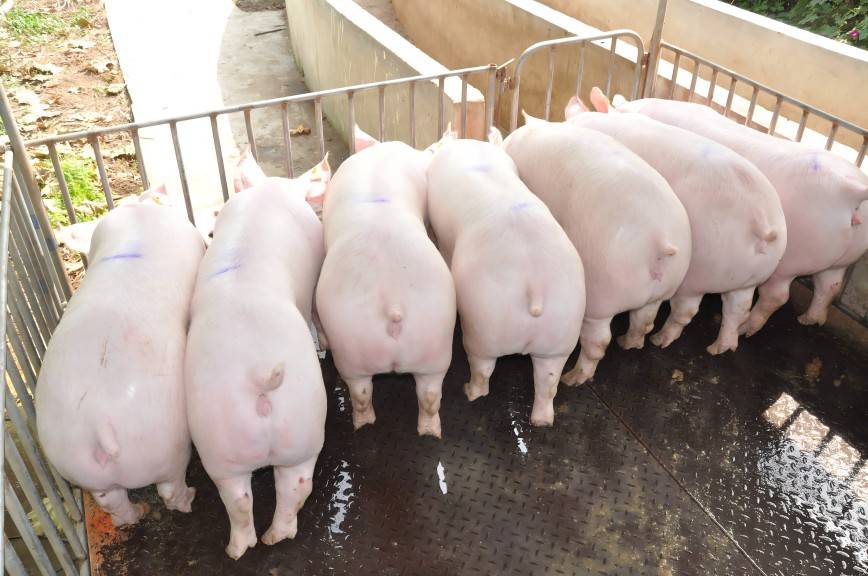
Studies on the application of curcumin in fattening pigs have found that curcumin can significantly increase the final weight, average daily weight gain and feed conversion rate of pigs, significantly reduce serum glutamic oxaloacetic transaminase activity and malondialdehyde content, significantly increase serum total protein and blood glucose; significantly reduce fat rate, back fat thickness and muscle drip damage as well as carcass glycolysis, significantly increase lean meat rate and muscle redness (a* value), increased the area of the eye muscle, increased the protein content of the longissimus dorsi muscle; increased serum antibody levels for swine fever, type O foot-and-mouth disease, and blue ear disease [31-33].
In addition, curcumin can inhibit the uptake of glucose by fat cells and the de novo synthesis of fatty acids by inhibiting the ERK1/2-PPAR-γ signaling pathway, thereby reducing lipid deposition in pig fat cells [34]. The results show that curcumin has the effect of improving the growth performance and meat quality of fattening pigs. In addition, curcumin can reverse or alleviate the activation of the NO/NOS system in the hippocampus of pigs caused by transport stress, indicating that curcumin may have an anti-stress effect [35]. In summary, curcumin can be used as a green additive to replace antibiotics.
Shi Yunpeng [36] found that curcumin mixed with the porcine reproductive and respiratory syndrome virus and then inoculated into MARC-145 cells at the same time, and found that curcumin could inhibit viral infection, and there was a concentration gradient dependence. Curcumin had no inhibitory effect on virus adsorption, but could inhibit virus internalization and de-envelope by blocking G protein-mediated cell fusion. In vivo, curcumin cannot induce a significant increase in specific antibodies against PRRSV, but it can induce virus-specific lymphocyte proliferation [37].
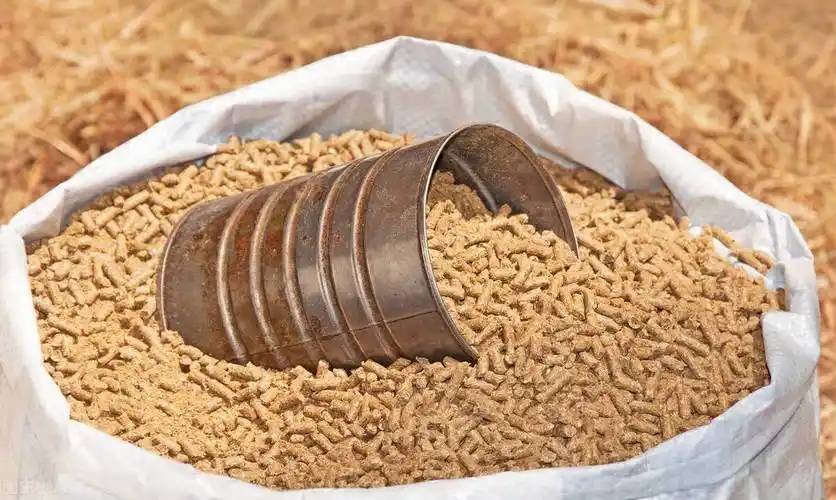
The results show that curcumin can inhibit PRRSV infection in piglets. In addition, curcumin can inhibit the infection and replication of porcine rotavirus in porcine intestinal epithelial cells, suggesting that curcumin may have the effect of preventing and treating viral diarrhea in piglets [38]. Streptococcus suis can induce the production of pro-inflammatory cytokines such as IL-6 and TNF-α in splenocytes, while curcumin can inhibit the production of pro-inflammatory factors and reduce the ratio of pro-inflammatory factors to anti-inflammatory factors [39]. In addition, the combination of porcine circovirus inactivated vaccine and curcumin can increase the cellular immune level of piglets against circovirus, and within a certain dose range, an increase in curcumin concentration is beneficial to enhance immune activity [40].
3 Summary
At present, the country has implemented a policy of banning antibiotics at the feed end and reducing and limiting the use of antibiotics at the breeding end. It is urgent to find alternatives to antibiotics. Curcumin, a bioactive substance derived from plants, has the effect of improving production performance, meat quality and immunity, as well as inhibiting pathogenic microorganisms. It also has the advantages of being safe, non-toxic and harmless, and can be used as a potential alternative to antibiotics in feed. Problems such as poor stability, low bioavailability and an unclear mechanism of action need to be further addressed. As these problems continue to be solved, curcumin has broad prospects for use as a new green feed additive in pig production.
Reference:
[ 1] Zielinska A, Alves H, Marques V, et al.Properties, extrac- tion methods, and delivery systems for curcumin as a nat- ural source of beneficial health effects[J].Medicina, 2020, 56 (7): 336.
[2] Chen Hui. Biological functions of curcumin and its application in pig production [J]. Pig Raising, 2019, 6: 25-30.
[3] Zhang Hong, Xiao Dingfu. Physiological functions of curcumin and its application in aquaculture [J]. Feed Research, 2021, 5: 133-136.
[4] Yang H, Du Z, Wang W, et al. Structure-activity relation- ship of curcumin: role of the methoxy group in anti-in- flammatory and anticolitis effects of curcumin[J]. Journal of Agricultural and Food Chemistry, 2017, 65(22): 4509-4515.
[5] YuT Z,DohlJ,ParkYM, et al. Protective effects of dietary curcumin and astaxanthin against heat-induced ROS pro- duction and skeletal muscle injury in male and female C57BL/6J mice[J].Life Sciences, 2022, 288(1): 120160.
[6] Hu Liufang, Wang Ying, Ren Rujing, et al. Antioxidant stress effect and regulatory mechanism of Keap1-Nrf2/ARE signaling pathway [J]. International Journal of Pharmaceutical Research, 2016, 43(1): 146-152, 166.
[7] Zhang J F, Han H L, Shen M M, et al. Comparative stud- ies on the antioxidant profiles of curcumin and bisdeme- thoxycurcumin in erythrocytes and broiler chickens[J]. Animals, 2019, 9(11): 953.
[8] Ruan D, Zhu Y W, Fouad A M, et al.Dietary curcumin en- hances intestinal antioxidant capacity in ducklings via al- tering gene expression of antioxidant and key detoxifica- tion enzymes[J]. Poultry Science, 2019, 98(9): 3705-3714.
[9] Karimian M S, Pirro M, Majeed M, et al. Curcumin as a natural regulator of monocyte chemoattractant protein-1 [J].Cytokine & Growth Factor Reviews, 2017, 33: 55-63.
[10] KongY D, Li M,Guo G L, et al. Effects of dietary curcum- in inhibit deltamethrin-induced oxidative stress, inflam- mation and cell apoptosis in Channa argus via Nrf2 and NF-κB signaling pathways[J].Aquaculture,2021,540: 736744.
[ 11] Zhang J W, Zheng Y L,Luo Y, et al.Curcumin inhibits LPS-induced neuroinflammation by promoting microgli- al M2 polarization via TREM2/ TLR4/ NF-κB pathways in BV2 cells[J].Molecular Immunology,2019, 116:29-37.
[ 12] Guo H, Callaway JB, Ting PY. Inflammasomes: mecha- nism of action, role in disease, and therapeutics[J]. Na- ture Medicine, 2015, 21(7):677-687.
[13] Hasanzadeh S, Read M I, Bland A R, et al. Curcumin: an inflammasome silencer[J]. Pharmacological Re- search, 2020, 159: 104921.
[ 14] Tyagi P, Singh M, Kumari H, et al. Bactericidal activity of curcumin Ⅰ is associated with damaging of bacterial membrane[J]. PLoS One, 2015, 10 (3): e0121313.
[15] Zhang Xin. Study on the antibacterial activity and anti-inflammatory mechanism of curcumin against endometritis pathogens [D]. Doctoral dissertation. Hohhot: Inner Mongolia Agricultural University, 2017.
[16] Li Haiying, Qiu Mingheng, Chen Jian, et al. Synthesis and antibacterial evaluation of L-arginine-based curcumin derivatives [J]. Journal of Hebei University (Natural Science Edition), 2021, 41(2): 155-160.
[17] Hua Chenyan. Research on the inhibitory mechanism of curcumin against gray mold of kiwifruit [D]. Master's thesis. Hefei: Hefei University of Technology, 2019.
[18] PrajapatiJ, RaoP,Poojara L, et al.Unravelling the antifun- gal mode of action of curcumin by potential inhibition of CYP51B: A computational study validated in vitro on mucormy-cosis agent, Rhizopus oryzae[J]. Archives of Biochemistry and Biophysics, 2021, 712: 109048.
[19] Huang Jinhua. Screening of traditional Chinese medicine against coccidiosis and research on curcumin compound preparations [D]. Master's thesis. Guangzhou: South China Agricultural University, 2019.
[20] Fu YS, Chen TH,Weng L, et al. Pharmacological proper- ties and underlying mechanisms of curcumin and pros- pects in medicinal potential[J].Biomedicine and Pharma- cotherapy, 2021, 141: 111888.
[21] Balasubramanyam K, Varier R A, Altaf M, et al. Cur- cumin,a novel p300/CREB-binding protein-specific in- hibitor of acetyltransferase, represses the acetylation of histone/nonhistone proteins and histone acetyltransfer- ase-dependent chromatin transcription[J]. Journal of Bi- ological Chemistry, 2004, 279(49): 51163-51171.
[22] Wei Z Q, Zhang Y H, Ke C Z, et al. Curcumin inhibits hepatitis B virus infection by down-regulating cccD- NA-bound histone acetylation[J]. World Journal of Gas- troenterology, 2017, 23(34): 6252-6260.
[23] Teng C F, Yu C H, Chang H Y, et al. Chemopreventive effect of phytosomal curcumin on hepatitis b virus-relat- ed hepatocellular carcinoma in a transgenic mouse mod- el[J]. Scientific Reports , 2019, 9: 10338.
[24] Han Meiyu. Effect of curcumin on immune function of broilers with AFB1 subchronic poisoning [D]. Master's thesis. Harbin: Northeast Agricultural University, 2017.
[25] Liu Mengjie. Effect of curcumin on the production performance, serum biochemical indicators, and antioxidant and immune function of heat-stressed laying hens [D]. Master's thesis. Nanjing: Nanjing Agricultural University, 2019.
[26] Li S. Study on the regulatory effect of curcumin on immune cells after spinal cord injury in rats [D]. Yan'an: Yan'an University, 2019.
[27] He J. Study on the regulatory effect and related mechanism of curcumin on liver function in IUGR weaned piglets [D]. Doctoral dissertation. Nanjing: Nanjing Agricultural University, 2019.
[28] Wang, Fei. Effect of curcumin on intestinal histomorphology and function in weaned piglets with intrauterine growth restriction [D]. Master's thesis. Nanjing: Nanjing Agricultural University, 2019.
[29] Deng, Hui, Yang, Jiabao, Chen, Jin, et al. Effect of curcumin on growth performance, body antioxidant and immune function of Sichuan-Tibetan black piglets [J]. China Feed, 2018, 12: 31-35.
[30] Zhao, C. Effects of curcumin on growth performance and intestinal mucosal barrier function in piglets challenged with Escherichia coli [D]. Master's thesis. Haikou: Hainan University, 2015.
[31] Wang B, Hou FQ, Zhu GQ, et al. Effects of curcumin on the production performance, meat quality and carcass parameters of finishing pigs [J]. Animal Husbandry and Veterinary Medicine, 2010, 42(7): 47-50.
[32] Zhang J. Study on the feeding effect of curcumin replacing quinoline on finishing pigs [D]. Master's thesis. Hefei: Anhui Agricultural University, 2012.
[33] Zhu Guoqiang, Zhang Weitao, Chen Tao, et al. Effects of curcumin additives on carcass GP, meat quality and blood biochemical indicators of finishing pigs [J]. Feed Industry, 2013, 34 (16): 9-12.
[34] Zhang L. Effects of curcumin on the differentiation of preadipocytes and its mechanism [D]. Master's thesis. Yangzhou: Yangzhou University, 2021.
[35] Xu H. Effects of curcumin on the NO-NOS system of growing pigs under transport stress [D]. Master's thesis. Nanjing: Nanjing Agricultural University, 2010.
[36] Shi Yunpeng. The mechanism of curcumin in the prevention of porcine reproductive and respiratory syndrome virus infection [D]. Master's thesis. Yangling: Northwest A&F University, 2017.
[37] Wu Xiaoping, Fang Junyang, Guo Zhongyi, et al. Evaluation of the effect of curcumin on porcine reproductive and respiratory syndrome virus infection in piglets [J]. Chinese Journal of Veterinary Medicine, 2020, 40(12): 2281-2285.
[38] Zhuo R H, Wu J M, Xu M H, et al. Study on the effect of curcumin on inhibiting rotavirus infection of porcine intestinal epithelial cells [J/OL]. Journal of Animal Nutrition, 2021, https://kns.cnki.net/kcms/detail/11.5461.S.20211020.0924.008.html.
[39] Wen Xiaoting, Huang Yuanming, Wang Zhihao, et al. In vitro study on the inhibition of curcumin on the inflammation response induced by Streptococcus suis[J]. Disease Surveillance, 2014, 29(1): 58-61.
[40] Yu Jianguo, Zhou Li. Effect of curcumin on the cellular immune effect of porcine circovirus inactivated vaccine [J]. Chinese Journal of Veterinary Medicine, 2016, 35(6): 64-66.


 English
English French
French Spanish
Spanish Russian
Russian Korean
Korean Japanese
Japanese